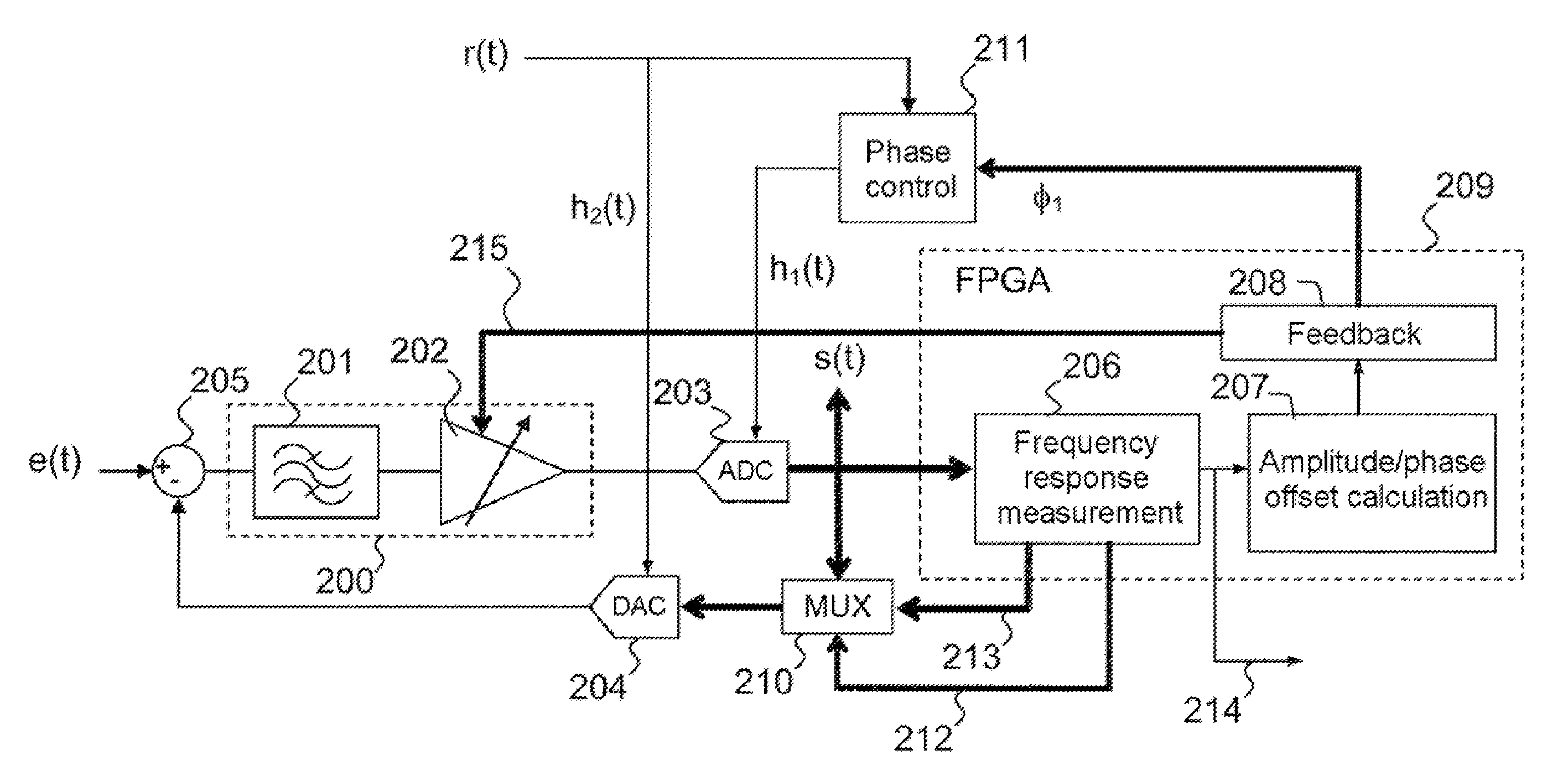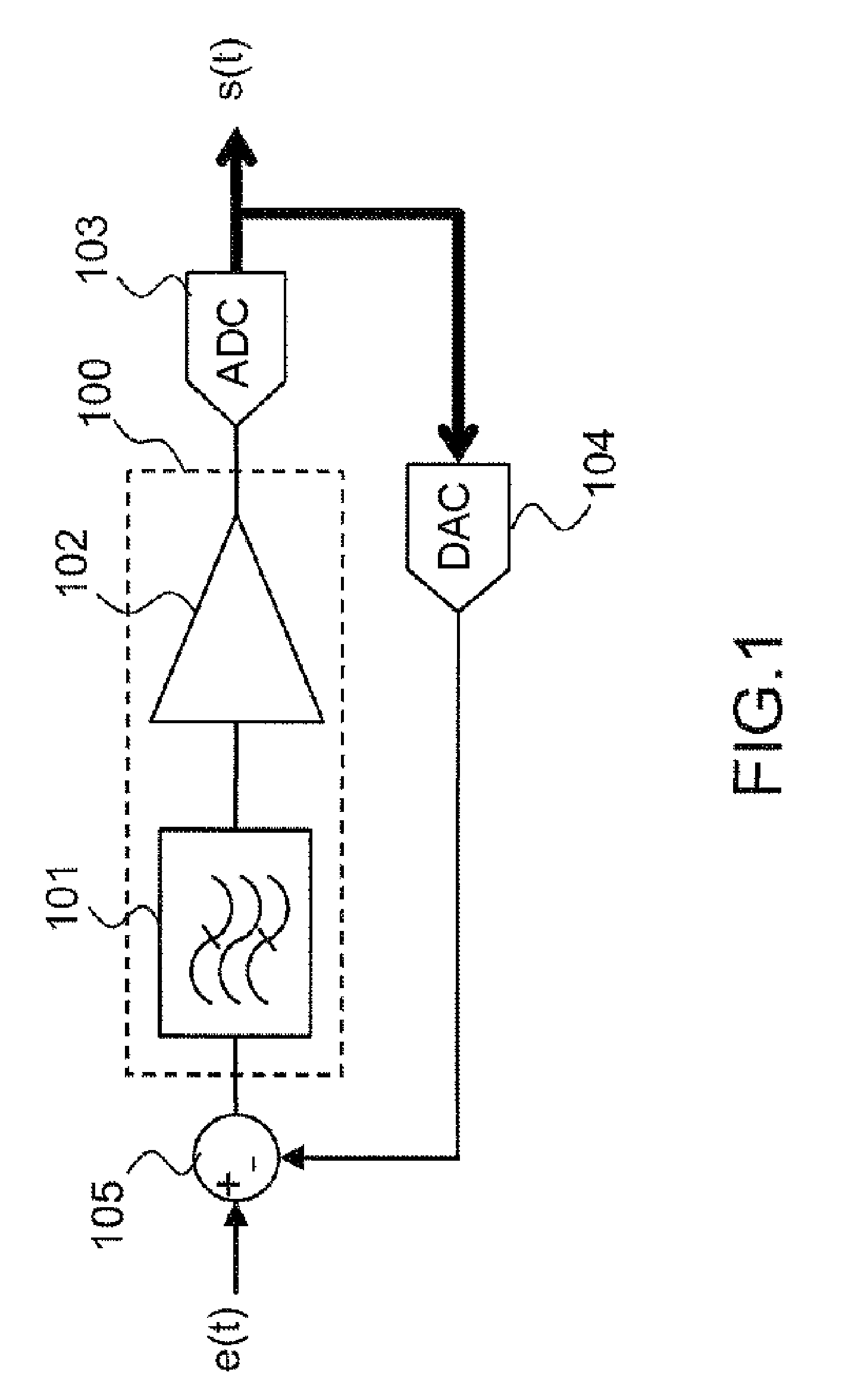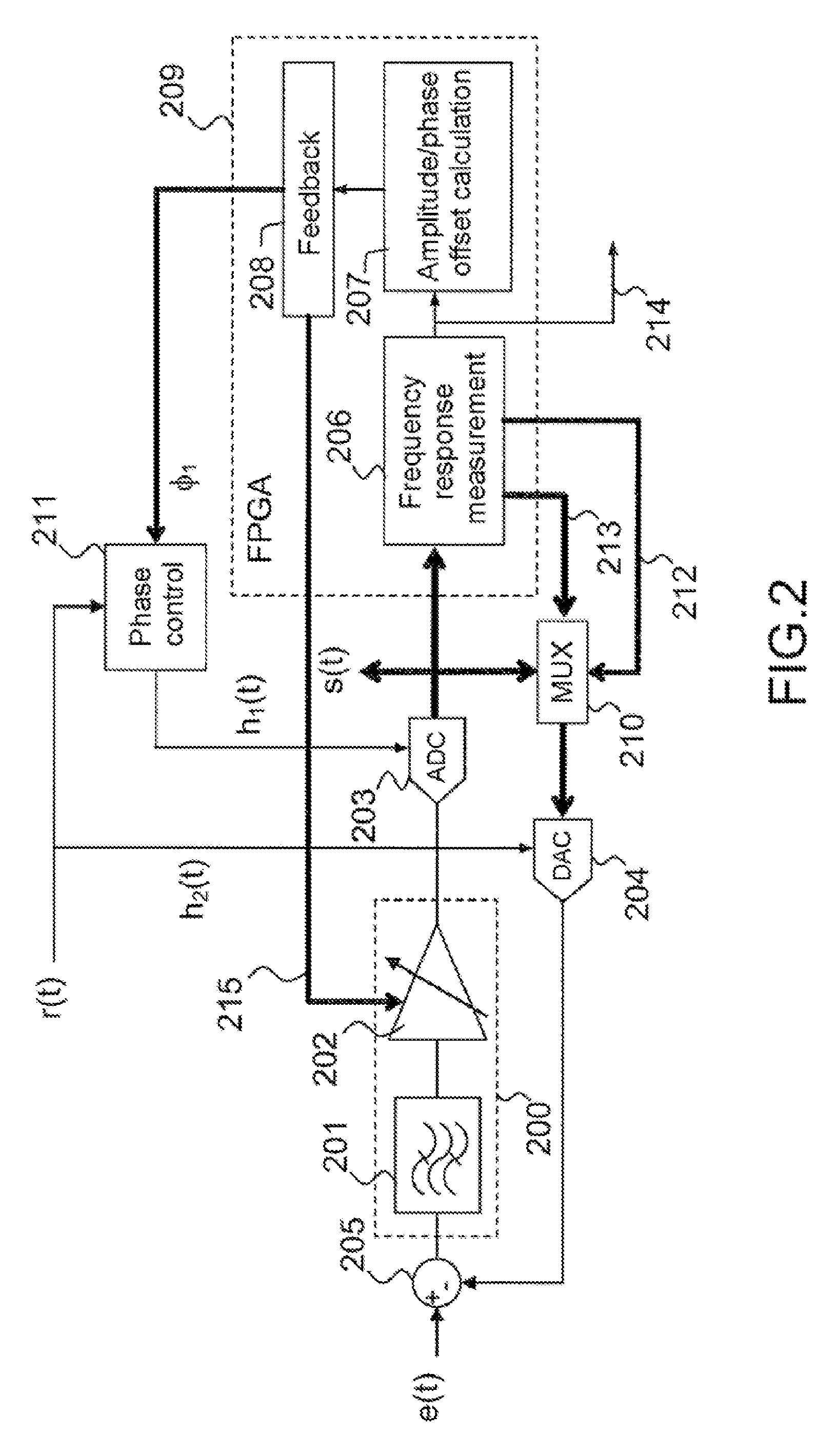Method for correcting amplitude and phase offsets in a sigma-delta modulator and sigma-delta modulator implementing said method
a sigma-delta modulator and amplitude offset technology, applied in the field of sigma-delta modulators and modulators implementing methods, can solve the problems of insufficient capacity of conventional adcs to sample/quantify input signals both rapidly and accurately, and the duration required for stabilization thus being too long with respect to the sampling period, so as to improve the accuracy of an adc, minimize errors, and improve time-domain precision
- Summary
- Abstract
- Description
- Claims
- Application Information
AI Technical Summary
Benefits of technology
Problems solved by technology
Method used
Image
Examples
Embodiment Construction
[0025]FIG. 1 presents an example sigma-delta modulator. As explained previously, the role of a continuous-time sigma-delta modulator is two-fold. A first role is to sample and digitize at high sampling frequency an analog signal e(t) with a small number of bits, i.e. less than the theoretical number required to reach a given signal-to-noise ratio. A second role is to shape the quantization noise so that the spectral density of this noise in the useful band of the signal to be converted is compatible with the signal-to-noise ratio aimed at after decimation. To this end, a continuous-time bandpass sigma-delta modulator is comparable to a feedback loop. An integrator 100 itself composed of a bandpass filter 101 and an amplifier 102 has the role of integrating and amplifying the error in the useful band of the signal. The loop comprises an ADC converter 103 producing the output s(t) of the modulator. The output s(t), i.e. the encoded signal, is then looped back to a DAC converter 104. A...
PUM
 Login to View More
Login to View More Abstract
Description
Claims
Application Information
 Login to View More
Login to View More - R&D
- Intellectual Property
- Life Sciences
- Materials
- Tech Scout
- Unparalleled Data Quality
- Higher Quality Content
- 60% Fewer Hallucinations
Browse by: Latest US Patents, China's latest patents, Technical Efficacy Thesaurus, Application Domain, Technology Topic, Popular Technical Reports.
© 2025 PatSnap. All rights reserved.Legal|Privacy policy|Modern Slavery Act Transparency Statement|Sitemap|About US| Contact US: help@patsnap.com



